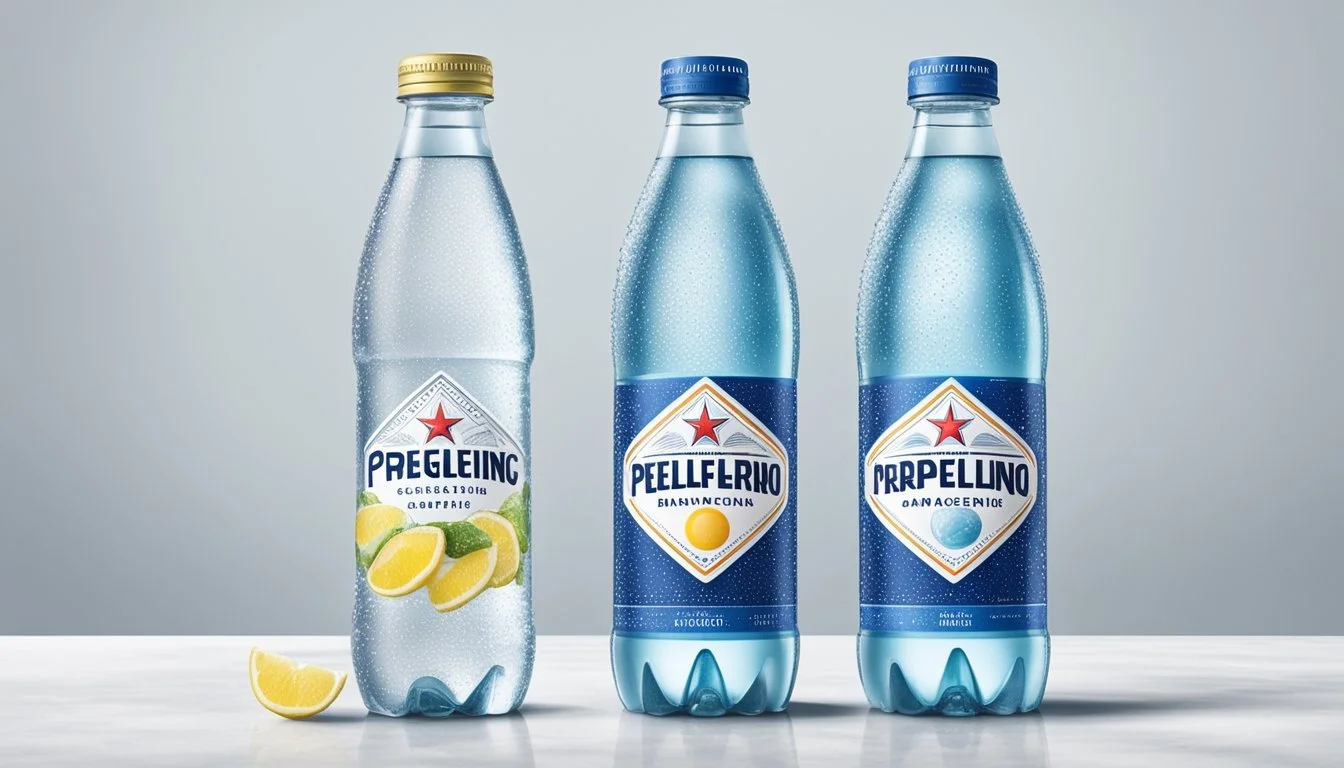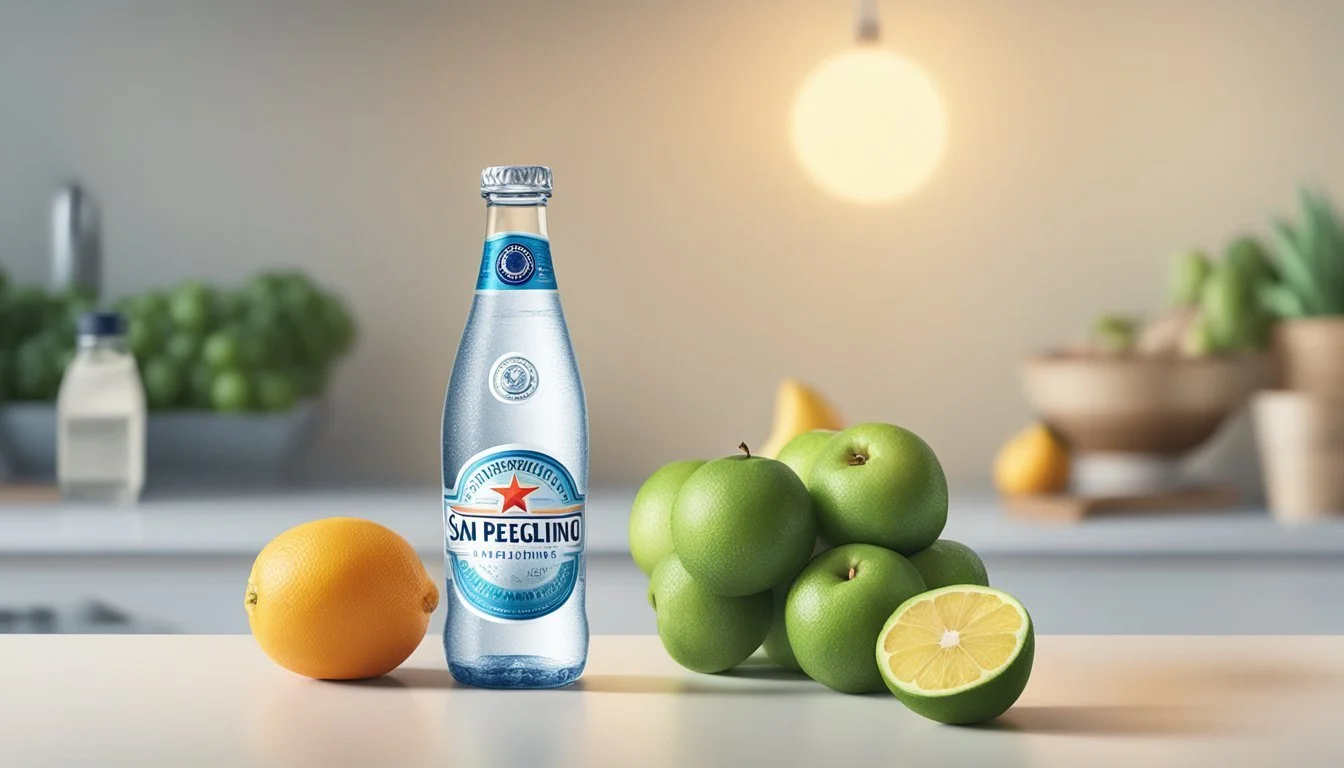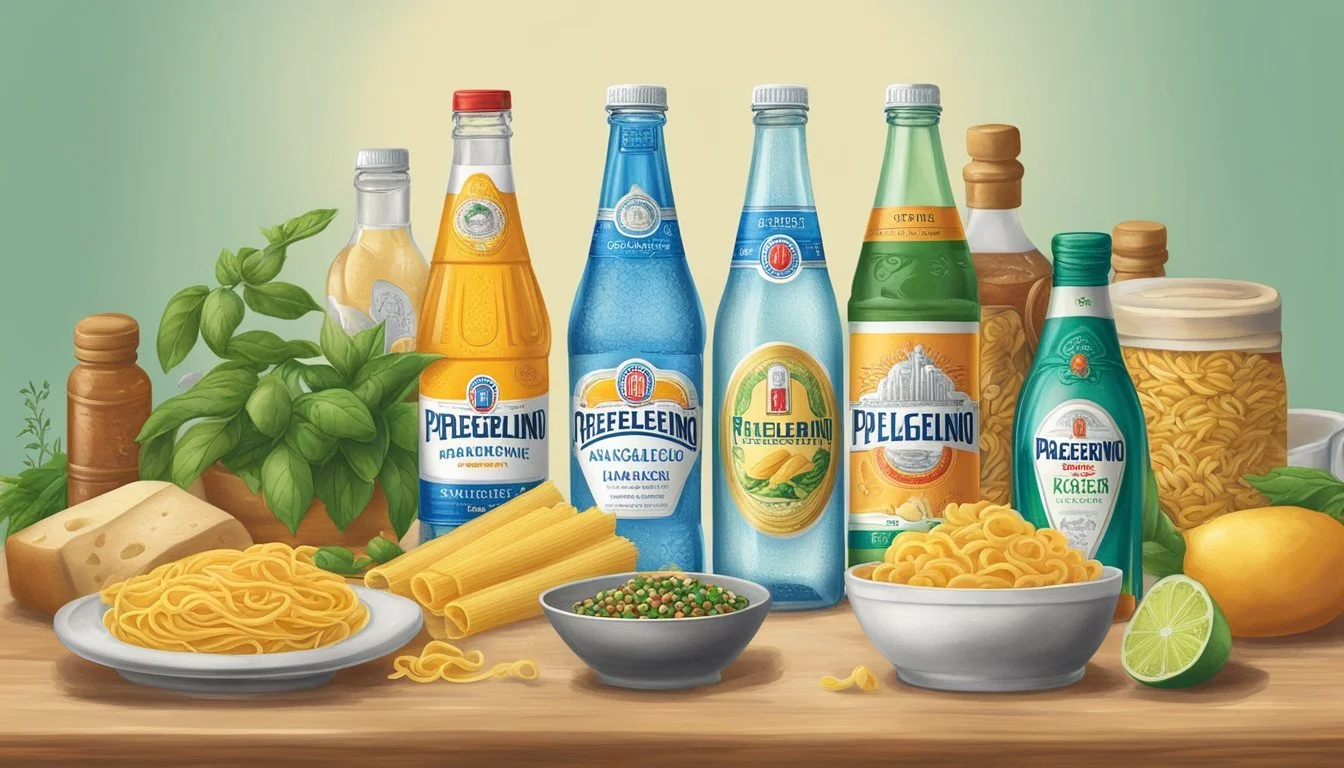San Pellegrino vs. Kroger
Comparing Quality and Taste
Choosing between San Pellegrino and Kroger bottled water can be a tough decision for those who seek both quality and value. San Pellegrino, with its rich history and reputation for delivering a distinctive mineral taste, often appeals to those who favor a premium experience. On the other hand, Kroger's bottled water, known for its affordability and accessibility, provides a solid choice for daily hydration.
For those who prioritize a refined flavor with natural carbonation, San Pellegrino stands out as the better choice. It offers a crisp, refreshing taste that’s hard to match due to its unique mineral composition sourced from Italy's pristine mountain springs.
Kroger's option may not boast the same artisanal quality, but it excels in delivering consistent, clean refreshment across its range of purified and spring water selections. This makes it a reliable and budget-friendly alternative for households and individuals alike.
Overview of Brands
San Pellegrino and Kroger represent two distinct segments in the bottled water industry, with unique histories and market positions that influence consumer perceptions and sales.
History of San Pellegrino
San Pellegrino, an Italian brand, started in 1899. This premium bottled water is sourced from the natural springs of the Italian Alps.
San Pellegrino's reputation for quality has seen it associated with fine dining establishments globally. Key to its identity is its naturally carbonated mineral water, which offers a distinct taste.
The brand is owned by Nestlé, adding to its prestige and extensive distribution network.
Kroger's Place in the Bottled Water Market
Kroger, a prominent American grocery chain, sources its bottled water from various locations across the U.S. Unlike San Pellegrino, Kroger's bottled water offerings are marketed more towards everyday consumption rather than a premium experience.
Key Points:
Widely available and affordable.
Adheres to FDA regulations.
Comes in multiple varieties, including purified, spring, and distilled water.
Although not positioned as a high-end product, Kroger's bottled water aims to meet essential hydration needs at an accessible price point.
Perception and Sales of Bottled Water Brands
San Pellegrino is perceived as a luxury brand, often chosen for its distinct taste and high-quality assurance. This perception drives sales in upscale markets and fine dining.
Kroger's bottled water, on the other hand, is seen as a reliable, everyday choice. While it does not carry the prestige of San Pellegrino, its affordability and accessibility ensure steady sales across the country.
Sales Insights:
San Pellegrino: Strong presence in international markets, driven by brand prestige.
Kroger: Dominates within its supermarket chains, contributing to significant volumes in the grocery category.
By understanding these differences, consumers can make informed choices based on their preferences for either premium quality or practical daily use.
Composition and Health Impact
In comparing San Pellegrino and Kroger bottled water, it is essential to evaluate their mineral content, health impacts of sparkling water, and their pH levels. Each factor contributes significantly to the overall health benefits of the water.
Mineral Content in San Pellegrino and Kroger Water
San Pellegrino is renowned for its rich mineral content. It includes potassium, calcium, magnesium, and a moderate amount of sodium. These minerals are naturally infused as the water flows through limestone and volcanic rocks in the Italian Alps.
Kroger bottled water, on the other hand, typically undergoes purification processes which might strip away most minerals. It may be processed through reverse osmosis and then enhanced minimally with added minerals for taste, though it generally lacks the natural richness of San Pellegrino.
Mineral San Pellegrino (mg/L) Kroger (mg/L) Calcium 174 Minimal Magnesium 53 Minimal Sodium 33 Minimal Potassium 2 Minimal
Health Considerations of Sparkling Water
San Pellegrino is a sparkling water, meaning carbon dioxide is added during bottling to create bubbles. For many, sparkling water like San Pellegrino offers a pleasing alternative to sugary sodas, providing hydration without the extra calories.
Kroger water is usually still water, although they may offer their own sparkling varieties.
Sparkling water can sometimes cause minor gastrointestinal irritations, like bloating, due to the carbonation. However, the mineral content in San Pellegrino can support bone health and electrolyte balance. The absence of sugar, artificial flavors, and preservatives makes it a healthier option compared to soda.
Understanding pH Levels
The pH level of water is crucial in understanding its acidity or alkalinity. San Pellegrino typically has a pH of around 5.6 to 7.7, which is slightly acidic. This can contribute to its unique taste but is considered safe for consumption.
Kroger water, being purified, usually has a neutral pH level around 6.5 to 8.5, depending on their purification and mineral addition processes.
Maintaining a balanced pH in drinking water can aid in digestion and ensure the body’s hydration system works effectively. Too high or low pH levels can negatively impact taste and may affect the mineral balance necessary for optimal bodily functions.
Taste and Carbonation
When comparing San Pellegrino and Kroger sparkling waters, it’s essential to consider the nuanced differences in taste and carbonation. Specific factors like bubble size and flavored water options play significant roles.
The Role of Bubbles in Sparkling Water
Bubbles, or carbonation, significantly impact the drinking experience. San Pellegrino uses natural spring water, adding CO2 to create finely tuned bubbles. These bubbles offer a smooth, consistent fizz that appeals to many.
Kroger, on the other hand, often has larger bubbles, giving a more effervescent feel. This can lead to a harsher taste for some but is preferred by those who enjoy a more vigorous bubble.
Key Points:
San Pellegrino: Fine, smooth bubbles
Kroger: Larger, more vigorous bubbles
Comparing the Flavor Profiles
San Pellegrino is known for its subtle mineral taste, enhanced by carbonation. The taste is often described as refreshing with a slight, earthy note. This makes it a favorite among those who prefer a nuanced flavor.
Kroger’s sparkling water is typically less mineral-heavy, resulting in a cleaner, more neutral taste. This neutrality can be a blank canvas for flavored versions, though some might find it lacks the depth of its Italian competitor.
Key Points:
San Pellegrino: Mineral-rich, slightly earthy taste
Kroger: Neutral, clean taste
Varieties of Flavored Waters
Both brands offer a range of flavored waters. San Pellegrino features classic tastes like lemon, lime, and orange, with a robust, natural essence. These flavors are well-integrated, developing alongside the carbonation.
Kroger's flavored selections include options like grape, cucumber, and watermelon. These tend to provide a more straightforward, pronounced taste. The variety appeals to a broad audience looking for specific and sometimes bold flavor profiles.
Key Points:
San Pellegrino: Classic flavors such as lemon, lime, and orange
Kroger: Bold flavors including grape, cucumber, and watermelon
Environmental and Health Safety
When comparing the environmental and health safety of San Pellegrino and Kroger bottled water, it's essential to consider their water sources, safety regulations, and the sustainability of their packaging.
Water Source and Sourcing Standards
San Pellegrino sources its water from natural springs in the Italian Alps. This location is known for its pristine water quality, free from industrial pollutants.
Kroger's water sources can vary. Some bottles are filled with spring water, while others might be purified tap water. Consumers should check the label to verify the origin.
Both brands follow strict sourcing standards, ensuring the water is clean. San Pellegrino's natural springs provide a consistent quality known for its mineral content, while Kroger ensures its various sources meet safety standards.
Bottled Water Safety Regulations
Both San Pellegrino and Kroger adhere to FDA regulations in the U.S. and similar standards elsewhere. These regulations require bottled water to be as safe as tap water.
San Pellegrino undergoes rigorous testing to maintain its reputation for purity and quality. They focus on maintaining the natural mineral balance of their water.
Kroger ensures all their bottled water products comply with EPA guidelines. They also conduct regular testing for contaminants such as BPA and microplastics. Many of their bottles are now BPA-free, addressing consumer health concerns.
Impact of Packaging and Sustainability
The environmental impact of bottled water is a growing concern. San Pellegrino uses glass bottles and BPA-free plastic options, reducing plastic waste. Their glass bottles are often reused and recycled, minimizing environmental harm.
Kroger primarily uses plastic bottles, which pose a significant environmental issue due to pollution and waste. Although some bottles are BPA-free, the single-use plastic problem persists.
Consumers should consider the sustainability efforts of each brand. San Pellegrino's commitment to using glass and high-quality plastics highlights their dedication to minimizing environmental impacts. In contrast, Kroger's reliance on plastic emphasizes the need for improved sustainable practices in the bottled water industry.
Cultural and Culinary Significance
San Pellegrino and Kroger bottled waters play distinct roles in both culinary settings and social environments. Their impact can be observed in how they enhance the dining experience and their presence in everyday social scenarios.
Sparkling Water in Gastronomy
San Pellegrino is often chosen by sommeliers and chefs to complement fine dining experiences. This sparkling water, bottled at San Pellegrino Terme in Italy, is praised for its ability to cleanse the palate between courses, which enhances the flavors of food and wine.
Its natural mineral content adds a subtle, refreshing taste that pairs well with gourmet dishes. Kroger, on the other hand, is typically found in casual dining settings and is valued for its affordability and accessibility rather than prestige.
While Kroger's sparkling water does contain natural flavors, it does not have the same historical and cultural connection to gastronomy that San Pellegrino holds. San Pellegrino's branding is synonymous with luxury, often found in upscale restaurants, whereas Kroger serves as a reliable and economical choice for everyday meals.
The Rise of Sparkling Water in Social Settings
Sparkling water has grown in popularity within social settings, from parties to casual gatherings. San Pellegrino's elegant packaging and refined taste make it a popular choice at formal events and cocktail parties. It often serves as a sophisticated non-alcoholic alternative, appreciated for its crispness and natural carbonation.
Kroger offers a variety of flavored sparkling waters that cater to diverse palates, making it a favorite for family gatherings and casual events. Its lower cost allows for generous supply without compromising on taste, making it accessible for larger groups.
Whether it is the upscale presence of San Pellegrino or the approachable nature of Kroger, both brands play significant roles in shaping the social consumption of sparkling water.
Economic Considerations
Evaluating San Pellegrino and Kroger bottled water involves examining several important economic factors. Key elements include price differences and how market trends influence consumer preferences for each brand.
Price Comparison
San Pellegrino is recognized as a premium brand, often commanding higher prices due to its sourcing from Italian springs and its mineral content. In contrast, Kroger’s bottled water is more budget-friendly, reflecting its position as a store brand and its typically local sourcing.
For a clearer view:
Brand Price (Per Liter) San Pellegrino $1.50 - $2.00 Kroger $0.50 - $1.00
The significant price difference attracts different consumer segments. San Pellegrino appeals to those willing to pay more for perceived quality and brand prestige, whereas Kroger targets cost-conscious consumers looking for basic hydration without the premium price tag.
Market Trends and Consumer Preferences
Consumer preferences vary widely between these two brands. San Pellegrino's market appeal is driven by its association with luxury and fine dining. This positioning helps maintain its status among high-income consumers and those preferring a sophisticated image.
Kroger, however, benefits from the trend towards affordability and accessibility. With widespread availability at numerous Kroger stores, it caters to everyday shoppers who prioritize value and convenience.
Moreover, trends show a growing interest in eco-friendly options. San Pellegrino’s efforts in sustainable packaging resonate well with environmentally conscious buyers. Meanwhile, Kroger emphasizes affordability and practicality, which continue to be strong selling points in challenging economic times.
These economic considerations highlight how pricing, sales strategies, and consumer preferences shape the competitive landscape between premium and budget bottled water brands.
Final Thoughts
Choosing between San Pellegrino and Kroger water involves evaluating several factors such as taste, price, and health considerations.
Making an Informed Choice
San Pellegrino offers a distinct mineral taste and is well-regarded for its high-quality bottling standards. Kroger Water is a more affordable option, making it accessible for daily hydration.
When evaluating these brands, one should consider personal taste preferences. Some might prefer the subtle mineral flavor of San Pellegrino, while others might find Kroger Water's neutral taste more suitable.
For health-conscious consumers, San Pellegrino's mineral content provides added benefits. Kroger Water, although lacking in minerals, offers reliable hydration without the extra cost. Environmental impact is another factor, where reusable glass bottles of San Pellegrino might appeal more than the typical plastic bottles of Kroger Water.
The Bottom Line on San Pellegrino vs. Kroger Water
San Pellegrino, with its Italian heritage, offers a premium experience with a price tag to match. Kroger Water, on the other hand, ensures cost-effective hydration for those on a budget.
Taste remains subjective, but San Pellegrino's carbonation level and mineral content might justify its higher price for some. For others, Kroger Water's lower price and adequate quality might be more appealing.
Both brands meet basic hydration needs, but the choice comes down to personal preference and specific needs such as flavor, cost, and health benefits. Shoppers should weigh these factors carefully to make an informed choice that suits their lifestyle and preferences.
More About San Pellegrino
Acqua Panna vs San Pellegrino: Which Bottled Water is Better?
Boxed Water vs San Pellegrino: Which Bottled Water is Better?
Core Hydration vs San Pellegrino: Which Bottled Water is Better?
Ice Mountain vs San Pellegrino: Which Bottled Water is Better?
Icelandic Glacial vs San Pellegrino: Which Bottled Water is Better?
Just Water vs San Pellegrino: Which Bottled Water is Better?
Mountain Valley Spring Water vs San Pellegrino: Which Bottled Water is Better?
Nestle Pure Life vs San Pellegrino: Which Bottled Water is Better?
Poland Spring vs San Pellegrino: Which Bottled Water is Better?
San Pellegrino vs Alkaline88: Which Bottled Water is Better?
San Pellegrino vs Aqua Carpatica: Which Bottled Water is Better?
San Pellegrino vs Cascade Mountain: Which Bottled Water is Better?
San Pellegrino vs Castle Rock: Which Bottled Water is Better?
San Pellegrino vs CBD Living: Which Bottled Water is Better?
San Pellegrino vs Crystal Geyser: Which Bottled Water is Better?
San Pellegrino vs Crystal Lake: Which Bottled Water is Better?
San Pellegrino vs Essence pH10: Which Bottled Water is Better?
San Pellegrino vs Hawaii Volcanic: Which Bottled Water is Better?
San Pellegrino vs Hawaiian Springs: Which Bottled Water is Better?
San Pellegrino vs Kirkland Signature: Which Bottled Water is Better?
San Pellegrino vs Liquid Death: Which Bottled Water is Better?
San Pellegrino vs Open Water: Which Bottled Water is Better?
San Pellegrino vs Proud Source: Which Bottled Water is Better?
San Pellegrino vs Purely Sedona: Which Bottled Water is Better?
San Pellegrino vs Richard's Rainwater: Which Bottled Water is Better?
San Pellegrino vs Simple Truth: Which Bottled Water is Better?
San Pellegrino vs Smartwater: Which Bottled Water is Better?
San Pellegrino vs Solan de Cabras: Which Bottled Water is Better?
San Pellegrino vs Talking Rain AQA: Which Bottled Water is Better?
San Pellegrino vs Topo Chico: Which Bottled Water is Better?
San Pellegrino vs Weird Water: Which Bottled Water is Better?
San Pellegrino vs Whole Foods 365: Which Bottled Water is Better?
San Pellegrino vs Whole Foods Italian Still Mineral water: Which Bottled Water is Better?
San Pellegrino vs Zephyrhills: Which Bottled Water is Better?





